For a solo camping trip, essential gear includes tent, sleeping bag, camp stove, flashlight, and first aid kit. Being prepared ensures a safe and enjoyable outdoor experience.
Make sure to pack light and versatile items to keep your backpack manageable while covering all your camping needs. Additionally, consider bringing a portable water filter for safe drinking water and a multi-tool for various tasks. Having the right gear will make your solo camping adventure stress-free and memorable.
Remember to plan your gear list based on the specific requirements of your camping location and season. Proper preparation is key to a successful solo camping trip.
Benefits Of Solo Camping
Connection With Nature
Spending time alone in the wilderness allows for uninterrupted connection with nature. Being in natural surroundings can lower stress levels and promote well-being.
Personal Growth
Embarking on a solo camping trip can lead to significant personal growth. Overcoming challenges builds self-confidence and resilience.
Choosing The Right Tent
When embarking on a solo camping adventure, selecting the perfect tent is a crucial decision that can greatly enhance your experience in the great outdoors. A good tent provides shelter, protection from elements, and a cozy space to rest after a long day of hiking or exploring. However, with numerous options available, how do you choose the right tent for your solo camping trip?
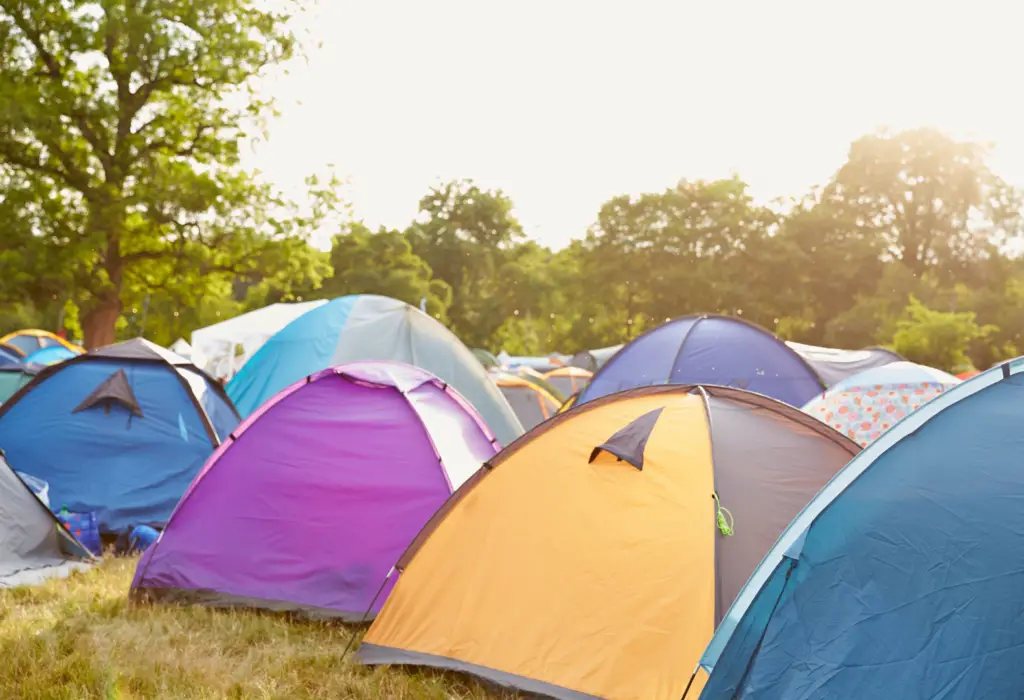
Before diving into the different types of tents you can choose from, it’s important to consider a few key factors that are specific to solo camping.
Types Of Tents To Choose From
Now that you’ve taken the unique demands of solo camping into account, let’s explore the various types of tents available that can cater to your specific needs.
1. Bivy Sacks:
Suggested for:
- Weight-conscious hikers
- Minimalist adventurers who prefer ultra-light gear
Bivy sacks are the most lightweight option available for solo campers. Designed to accommodate only one person, these compact shelters offer excellent portability and protection from the elements, making them ideal for hikers looking to cover long distances.
2. Single-wall Tents:
Suggested for:
- Solo campers who value simplicity
- Outdoor enthusiasts in climates with fewer bugs and condensation issues
Single-wall tents are a popular choice for solo campers due to their simple setup, reduced weight, and compact size. These tents typically have a waterproof and breathable outer layer, eliminating the need for a separate rainfly. They are a great option for those who prioritize convenience and minimalism.
3. Double-wall Tents:
Suggested for:
- Solo campers who prioritize comfort and space
- Camping in areas with high humidity or a significant bug presence
Double-wall tents are known for their excellent ventilation and bug protection. The design features an inner tent with mesh panels for improved airflow and insect resistance, as well as a rainfly for waterproofing. These tents offer more space and comfort for solo campers who enjoy a roomier sleeping area.
4. Hammocks With Bug Nets:

Suggested for:
- Adventure seekers looking for a unique camping experience
- Campers in areas with trees suitable for hanging hammocks
Hammocks with bug nets provide an alternative and exciting way to enjoy solo camping. Perfect for outdoor enthusiasts who love the idea of sleeping suspended between trees, these hammocks offer bug protection through an integrated net, ensuring a peaceful night’s sleep. Hammocks are especially advantageous in areas with limited flat ground.
5. Ultralight Tents:
Suggested for:
- Solo adventurers seeking the lightest possible gear
- Camping in areas with unpredictable weather conditions
Ultralight tents are specifically designed to minimize weight while still offering ample protection. These tents use lightweight materials like Dyneema or silnylon to reduce bulk and are favored by solo hikers aiming to cover long distances. With their compact size and weather-resistant features, ultralight tents are an excellent choice for campers who value mobility and versatility.
Remember, selecting the right tent for your solo camping trip is crucial for a comfortable and safe outdoor experience. Evaluate your priorities, consider the specific demands of solo camping, and choose a tent that fits your needs perfectly. Whether you opt for a minimalistic bivy sack or a more spacious double-wall tent, having the right shelter will ensure every solo adventure is a memorable one.
Sleeping Essentials
When it comes to solo camping, having the right sleeping essentials is crucial for a comfortable and restful night under the stars.
Sleeping Bag Selection
Choosing the perfect sleeping bag is essential to ensure a cozy night’s sleep while camping alone. Consider the following factors when selecting a sleeping bag:
- Temperature Rating: Choose a sleeping bag with a temperature rating suitable for the camping conditions. A specific temperature rating will ensure you stay warm in cold climates and prevent overheating in warmer locations.
- Insulation Type: Decide between down or synthetic insulation based on your needs. Down offers excellent warmth-to-weight ratio, while synthetic insulation performs better in wet conditions.
- Size and Shape: Opt for a sleeping bag that provides ample space and allows you to stretch comfortably. Consider whether a mummy-shaped bag or a rectangular one suits your sleeping style.
- Weight and Packability: If you plan on backpacking, prioritize a lightweight and compact sleeping bag that won’t weigh you down during your trek.
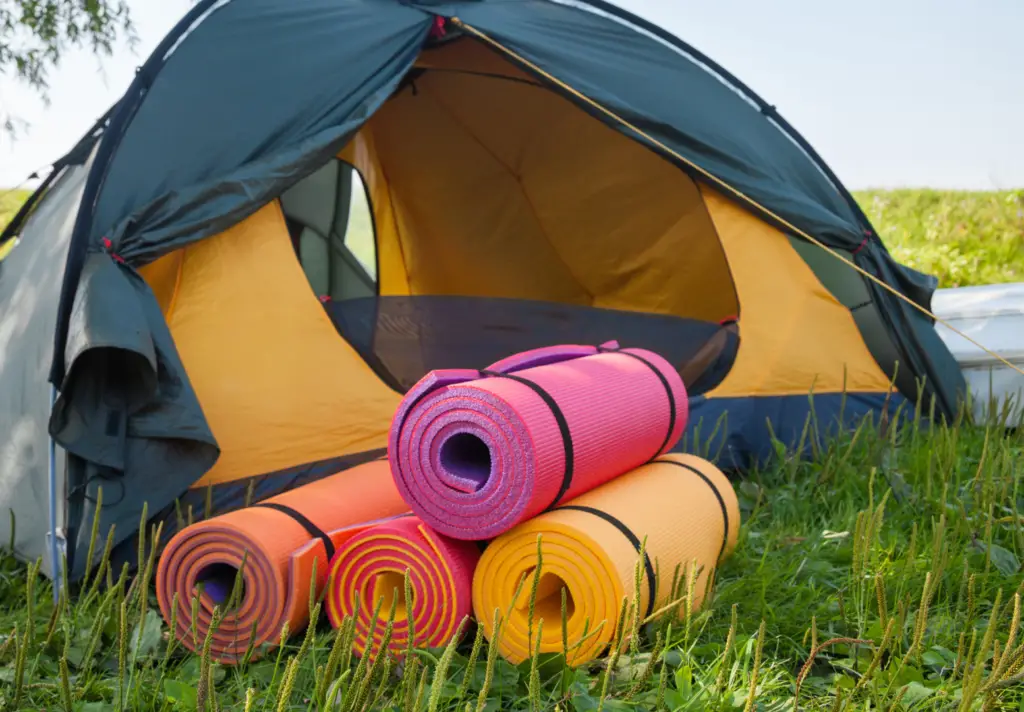
Sleeping Pad Options
Aside from a sleeping bag, a quality sleeping pad is a must-have for solo campers. It provides insulation, cushioning, and support, ensuring a good night’s sleep even on rocky or uneven terrain. Here are some sleeping pad options to consider:
- Inflatable Sleeping Pads: These pads are lightweight and highly packable, making them ideal for backpackers. They offer excellent insulation and can be adjusted for firmness.
- Self-Inflating Sleeping Pads: These pads combine foam and air, providing cushioning and insulation. They self-inflate when the valve is opened, saving you time and effort.
- Foam Sleeping Pads: Known for their durability and insulation, foam pads are a budget-friendly option. They are lightweight, easy to clean, and don’t require inflation.
By carefully selecting a suitable sleeping bag and a supportive sleeping pad, you can ensure a comfortable and rejuvenating rest while solo camping.
Cooking Gear
When camping solo, having the right cooking gear can make or break your outdoor dining experience. Here’s a breakdown of the essential cooking equipment you’ll need for your solo camping trip.
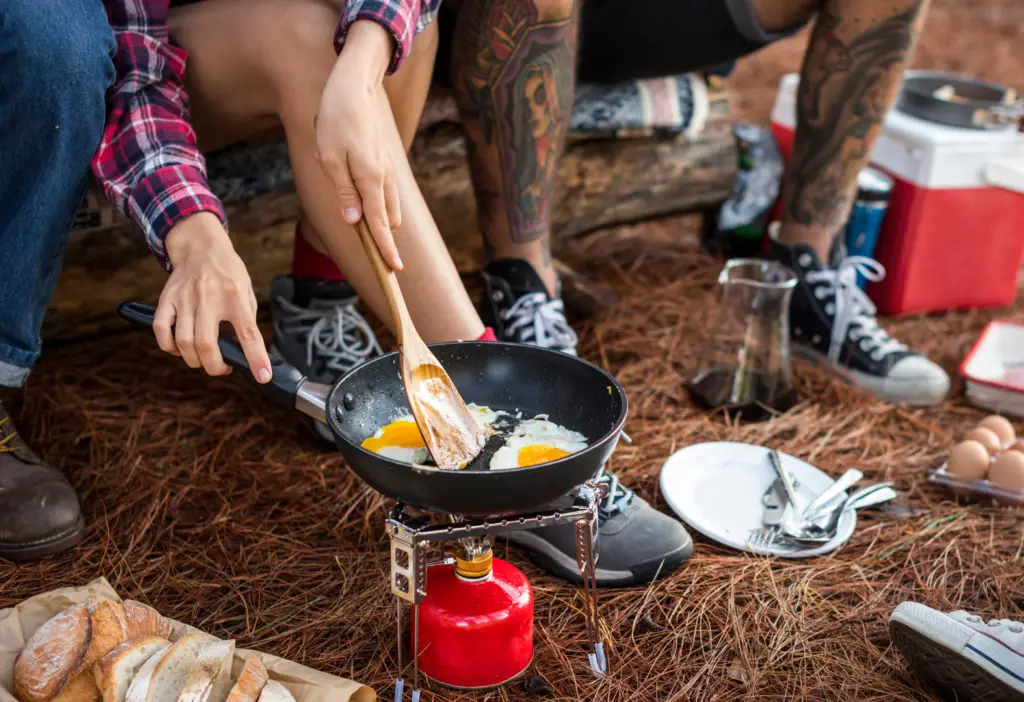
Portable Stove Options
- Choose a compact and lightweight stove for convenient cooking.
- Gas canister stoves are easy to use and provide quick heat.
- Consider a wood-burning stove for fuel versatility.
Cookware And Utensils
- Opt for durable and lightweight pots and pans for cooking.
- Include basic utensils like a spatula, knife, and cutting board.
- Don’t forget eating utensils such as forks, spoons, and plates.
Navigation Tools
When heading out on a solo camping adventure, having the right navigation tools is crucial for a safe and enjoyable experience in the great outdoors.
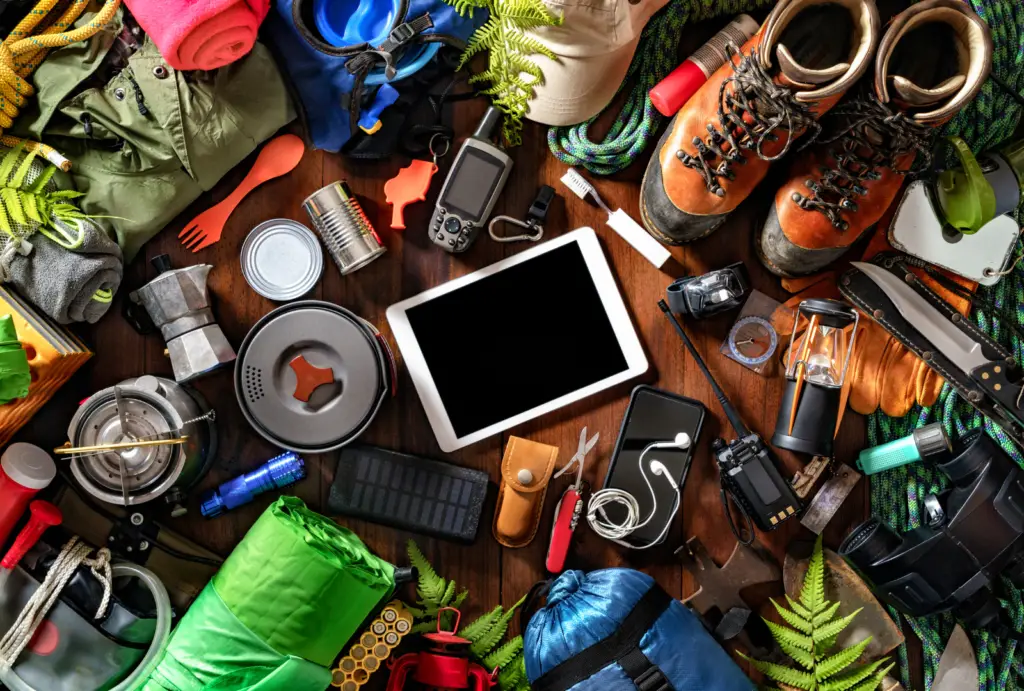
Maps And Compass
Maps and compass are traditional yet reliable tools that every solo camper should have in their gear kit.
Gps Devices
For tech-savvy campers, GPS devices provide accurate real-time location tracking and can be a valuable addition to your navigation arsenal.
Safety Equipment
When embarking on a solo camping trip, safety should always be your top priority. Packing the right safety equipment can provide peace of mind and ensure you are prepared for any unexpected situations that may arise. In this section, we will discuss the essential safety gear you should include in your solo camping gear list.
First Aid Kit Essentials
A well-stocked first aid kit is an absolute must-have for any camping trip. Accidents and injuries can happen, even in the great outdoors. So, it’s crucial to be prepared with the necessary items to handle minor injuries or medical emergencies.
To build your first aid kit, ensure that you include the following essentials:
- Band-aids (in various sizes) – These are great for treating minor cuts and blisters.
- Gauze pads and adhesive tape – Useful for larger wound dressings and securing bandages.
- Antiseptic wipes or solution – To clean and disinfect wounds effectively.
- Tweezers – For removing splinters or ticks.
- Scissors – Handy for cutting medical tape, clothing, or other materials.
- Disposable gloves – Protect yourself and others when providing first aid.
- Pain relievers – Over-the-counter pain medication like ibuprofen can alleviate aches and pains.
- Antihistamines – These can help with allergic reactions or insect bites.
- Triangular bandages – For creating slings or providing support for sprains and strains.
- CPR mask – Crucial if performing cardiopulmonary resuscitation (CPR).
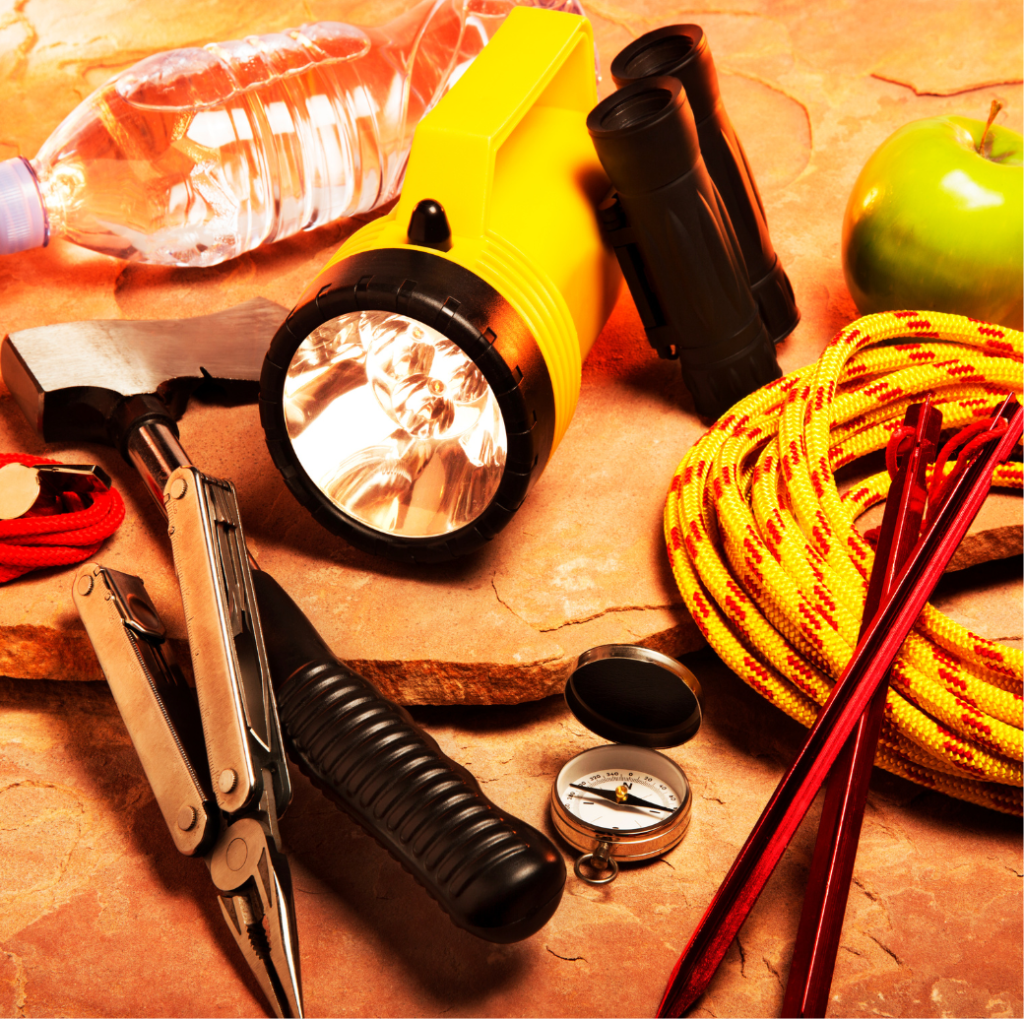
Emergency Communication Devices
In case of an emergency, possessing reliable communication devices can mean the difference between receiving aid promptly or facing potential dangers alone. These devices allow you to reach out for help or contact your loved ones to let them know you are safe. Here are a few emergency communication devices you should consider:
- A reliable cell phone – Ensure that your cell phone is fully charged before your trip. Keep it protected in a waterproof case or bag to prevent damage.
- A satellite phone – It’s a wise investment for those heading to remote areas with limited cell phone coverage.
- A two-way radio – Ideal for maintaining communication with fellow campers or park rangers in areas with limited or no cell phone reception.
Prioritize safety by carrying these essential safety items. They will not only provide you with the tools you need to address potential emergencies but also offer peace of mind as you venture out on your solo camping expedition.
Clothing And Footwear
When embarking on a solo camping trip, choosing the right clothing and footwear is crucial for comfort and safety in the great outdoors. Proper layering techniques and footwear selection play a significant role in ensuring an enjoyable and hassle-free experience. Let’s delve into these essential considerations in detail.

Layering Techniques
Effective layering is the key to staying comfortable in changing weather conditions. It involves wearing multiple layers of clothing to provide insulation and regulate body temperature. The three main layers generally include:
- Base Layer: Moisture-wicking fabric to keep the skin dry
- Insulating Layer: Thick, breathable fabrics for warmth
- Outer Layer: Waterproof, windproof shell for protection
Each layer serves a specific purpose, enabling you to adapt to varying temperatures and exertion levels while out in the wilderness.
Proper Footwear Selection
Choosing the right footwear is essential to prevent discomfort and potential injuries during your camping adventure. Here are some key points to consider when selecting appropriate footwear:
- Support: Look for sturdy, ankle-supporting boots for rough terrains
- Waterproofing: Ensure your footwear is waterproof to keep your feet dry
- Traction: Opt for shoes with good traction to prevent slips and falls
By prioritizing these aspects, you can ensure that your feet remain protected and comfortable throughout your solo camping excursion.
Personal Items
Solo camping requires careful planning and packing to ensure a safe and enjoyable experience. Personal items like hygiene kits and multi-tools are essential for any solo camping trip. It’s crucial to have the right gear to stay clean, safe, and prepared for any situation. Let’s take a look at the must-have personal items for solo camping.
Hygiene Kit
Staying clean and maintaining personal hygiene is crucial while camping solo. A well-packed hygiene kit will help you feel refreshed and comfortable throughout your trip. Here’s a basic hygiene kit checklist:
- Toothbrush and toothpaste
- Soap or biodegradable body wash
- Quick-drying towel
- Toilet paper
- Hand sanitizer
- Feminine hygiene products (if applicable)
Include these essentials in your backpack to ensure you can maintain personal hygiene while enjoying the great outdoors.
Multi-tool Or Knife
A multi-tool or knife is a versatile and essential piece of gear for solo camping. Whether you need to prepare food, fix equipment, or handle unexpected situations, a reliable multi-tool or knife will come in handy. Look for a high-quality, durable tool that includes the following features:
- Knife blade
- Serrated edge
- Screwdriver
- Pliers
- Bottle opener
- Scissors
Having a multi-tool or knife by your side will provide you with practical solutions for various camping needs and emergencies.
Also Read: Solo Camping Safety Checklist For Beginners
FAQs
What Are The Essential Items For Solo Camping?
To ensure a safe and enjoyable experience, you’ll need a tent, sleeping bag, cooking equipment, flashlight, first-aid kit, and navigation tools.
How Can I Choose The Right Solo Camping Gear?
When selecting gear, consider the weight, durability, and versatility of each item. Opt for lightweight, compact, and multi-functional gear to enhance your experience.
What Safety Precautions Should I Take When Camping Alone?
Prioritize safety by informing someone of your whereabouts, packing essential safety gear, practicing fire safety, and being aware of wildlife in the area.
What Are Some Tips For A Successful Solo Camping Trip?
Plan ahead, familiarize yourself with the area, pack light, be mindful of your surroundings, and embrace the solitude for a rewarding adventure.
Conclusion
To sum up, this solo camping gear list covers all the essentials you need for a successful adventure in the great outdoors. From lightweight tents and sleeping bags to portable stoves and reliable navigation tools, these gear items ensure your comfort, safety, and enjoyment while experiencing the tranquility of nature alone.
With the right equipment by your side, you can confidently embark on your solo camping trip and create unforgettable memories. Happy camping!



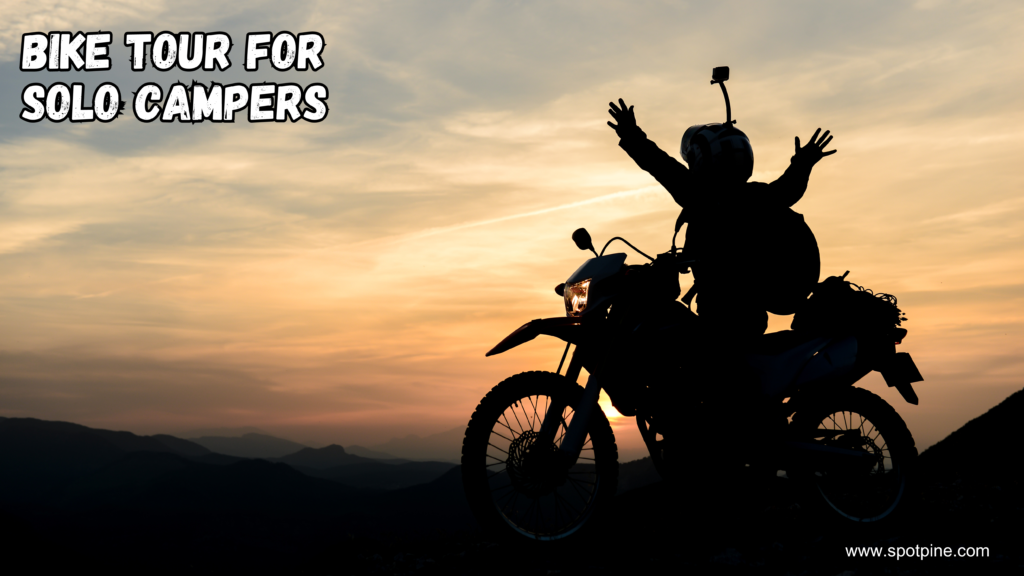
Pingback: Solo Camping Safety Checklist for Beginners
Pingback: Solo Camping Tips: Expert Strategies for a Memorable Adventure
Pingback: Difference between Hiking And Camping?
Pingback: Unleash Adventure: Solo Camping Activities
Pingback: How to Stay Safe Solo Camping: Essential Tips
Pingback: Solo Camping Hacks: 10 Clever Tips for an Easier Trip
Pingback: Solo Camping And Cooking: The Ultimate Guide - SpotPine